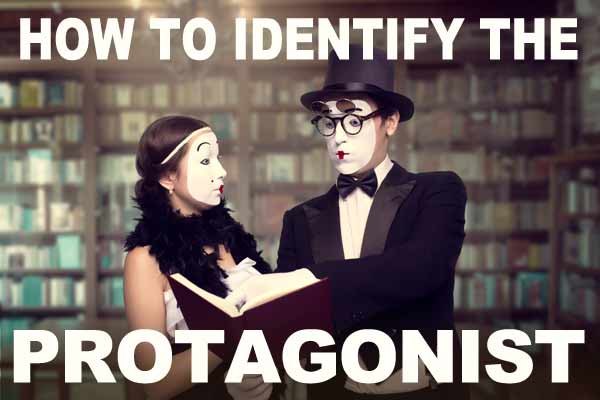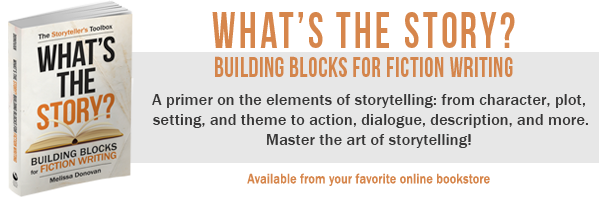This post contains affiliate links that earn commissions from qualifying purchases.
In most stories, the protagonist is obvious: Harry Potter, Lisbeth Salander, and Katniss Everdeen are unquestionably the protagonists of their respective stories. But sometimes the protagonist isn’t so obvious.
In some cases, a false protagonist is planted to intentionally mislead the audience, but the story later reveals another character to be the true protagonist. In other cases, primary characters get dominant roles within a story, making the true protagonist difficult to suss out.
George R.R. Martin is beloved and infamous for killing off main characters in his series A Song of Ice and Fire, and readers are often mislead or confused about which character is the protagonist at any given moment in the epic historical fantasy tale.
If we’re not sure which character is the protagonist, how do we go about identifying them?
Common Misconceptions About Protagonists
Readers often hold misconceptions about protagonists. Some common myths assume that the protagonist is the point-of-view character, the character who gets the most screen time, the first-person narrator, the “good guy” (or hero), or whichever character draws the most attention from the audience. And in film, we often assume the character played by the most famous actor is the protagonist.
While all of these traits are often associated with protagonists, none of them will help us definitively identify a story’s protagonist.
Here are a few examples of stories in which none of these criterion point to the protagonist:
- Heart of Darkness: The first-person narrator is not the protagonist.
- A Song of Ice and Fire: With multiple point-of-view characters, it’s impossible for all of them to be the protagonist.
- Lolita: Humbert Humbert is the protagonist, but he’s definitely not a good guy.
Who’s the Protagonist?
A story can have multiple protagonists. This is often the case in an ensemble, although the position of protagonist often rotates through the cast in various scenes or installments in a series. And some love stories or buddy stories might have co-protagonists. But these are rare, and even in many ensembles, love stories, and buddy stories, one of the characters fulfills the role of true protagonist more than the others, even if only slightly.
So who is the protagonist in a story, and how can we identify them?
- The protagonist faces challenges, particularly the central challenge or conflict within the story.
- The protagonist wants or needs something (has a goal).
- The antagonist’s actions are interfering with the protagonist’s ability to achieve the goal.
- The protagonist makes choices or decisions, which are usually difficult.
- The choices made by the protagonist lead to consequences, good and bad.
- The protagonist undergoes personal transformation, which is often dramatic, as a result of the events within the story.
- At its heart, the story is often about the protagonist; it is the protagonist’s story.
Other primary characters may meet these criteria, but the protagonist usually meets all these criteria more intensely than any of the other characters.
Perhaps most importantly, the story, at its heart, is ultimately about the protagonist.
Identifying the Protagonist
Do all protagonists fall within the paradigms outlined above? No. There are always exceptions. Storytelling, character development, and identifying a protagonist are not exact sciences. But these standards for the protagonist can be used to measure each primary character’s role within a story to figure out which is the true protagonist.
Have you ever found yourself wondering which character in a story is the protagonist? Have you ever entered a debate with a friend about which character was the protagonist in your favorite book or movie? How can you use a better understanding of protagonists to craft a stronger, clearer protagonist or a story with multiple or even misleading (false) protagonists?






I find I am mostly interested in the story and don’t care who tells it. I enjoy different points of view about the same story
I don’t have a preference for point of view either (it depends on what works best for that particular story), but that’s a different topic than identifying the main character (protagonist). Sometimes the protagonist is the narrator, other times they are not.
EDITOR’S NOTE: THIS COMMENT CONTAINS SPOILERS FOR GAME OF THRONES (SONG OF ICE AND FIRE):
A Song Of Ice And Fire (or Game Of Thrones to those of us who haven’t “yet” read the book) has to be probably the most unpredictable storiy ever.
Throughout the first series I expected Ned Stark to be a main character and suddenly, dead! The same happened with so many other main characters I wondered who was going to be left. It was definitely almost impossible to predict.
I was listening to the audiobooks, but then the world got crazy and I found myself searching for lighter reading (listening) material. But I did watch the entire series, and I agree with you completely. During that last episode of season one, I was waiting for Ned to get out of his predicament–even after the deed was done! I couldn’t believe what I was watching. It goes to show that you can break the rules (or guidelines) if you do it right.
But here’s another way of looking at it: storytellers actually do often kill off main characters (see: Titanic). It’s rare for them to kill off *the* main character, or the protagonist. With Game of Thrones, I’d probably argue that although Ned appeared to be the protagonist, ultimately, he was not. My take on GOT is that the entire Stark family functions as the protagonist, and it’s notable that Bran Stark is much more prominent as a main character or protagonist in the books.